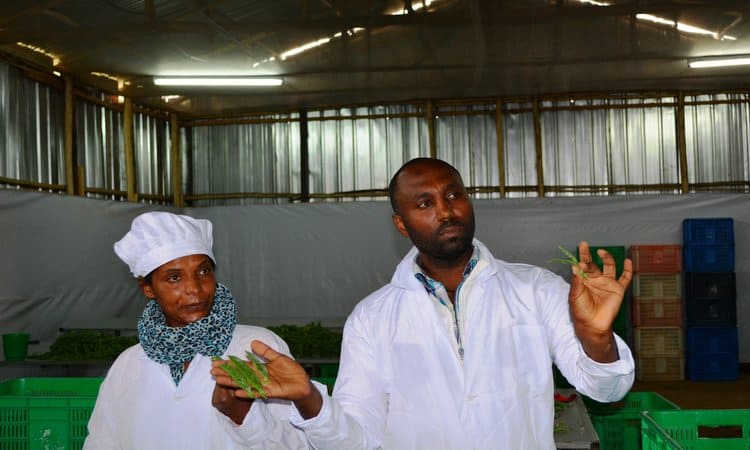With its high altitude, stable climate, and rich agricultural traditions, it is difficult to imagine a better place than Ethiopia for growing delicate crops such as snow peas and sugar snaps. The Sustainable Trade Initiative (IDH) works with several companies to build the infrastructure to grow these crops. In a country where about 80 to 85 percent of the population is employed in agriculture, and the average income per capita is US$470, the higher income from exporting legumes is welcome.
Farmers who grow legumes for export in addition to other crops can earn about four times as much as when growing local crops. We follow former farmer Biruk, who has been with fruit and flower producer Marginpar for several years.
Marginpar works with companies Mara Farming Ltd. and Solagrow in a project to help small farmers to organize themselves and to grow legumes for export. IDH co-funds the project, which is part of the Sustainability Initiative Fruit and Vegetables (SIFAV). Besides Ahold and Mara Farming, international companies and brands such as Jumbo, Coop, ICA, and Chiquita joined SIFAV; all strive for 100 percent sustainable sourcing by 2020.
Biruk has been working with farmers from rural Holeta (about 80 kilometers from Addis Ababa) on a daily basis. Biruk spent 6 years farming snow peas, making him the right person to talk to for the farmers about legumes.
These crops require more attention than the traditional local crops, so they call for additional knowledge and expertise. Biruk trains these farmers, providing them with tips on how to treat their crops.
Legumes are designed for the high-end supermarkets in the West, and must meet strict criteria. For example, the fruits must be a specific size; if they are larger or smaller; they cannot be sold. To meet these criteria, the farms must meet certain growing conditions.
The importance of those conditions becomes clear in Bilo, another region about 120 kilometers from Addis Ababa and about 100 km east of Holeta. A local farmer group of 70 farmers has started growing snow peas there. Plants that were in the same growth stage as the ones in Holeta are not as developed. Some farmers did not use the necessary rope for the plants to climb on; others placed legumes on the wrong side of a field, catching too much ground water.
Because these crops are unfamiliar to the farmers and have not turned a profit, it is difficult for the farmers to understand that they will benefit from farming legumes. “It’s good to do this, but I do not know exactly what financial benefits it will bring me,” said one of the farmers.
This surprised me, because they can earn much more growing legumes than growing the simpler local and traditional crops such as onions, potatoes, and tef, the endemic Ethiopian grain used for bread and their traditional foods.
The distrust of the Ethiopian farmers shouldn’t have surprised me. Some of them live in isolation, speak no English, and have no transportation outside their rural areas.It makes sense for them to be suspicious of the logistical chain for their sugar snaps to reach supermarket shelves.
According to Biruk, the fact that the farmers have started growing legumes is a good sign. “When they start seeing cash, their skepticism will give way to enthusiasm. But the interim period – that’s the tricky part,” he said.
I’ll be looking out for the reports of the first commercial exports of sugar snaps and snow peas out of Ethiopia. But if things go our way, you won’t need me to tell you about it; just check the origin of your next box of sugar snaps.













